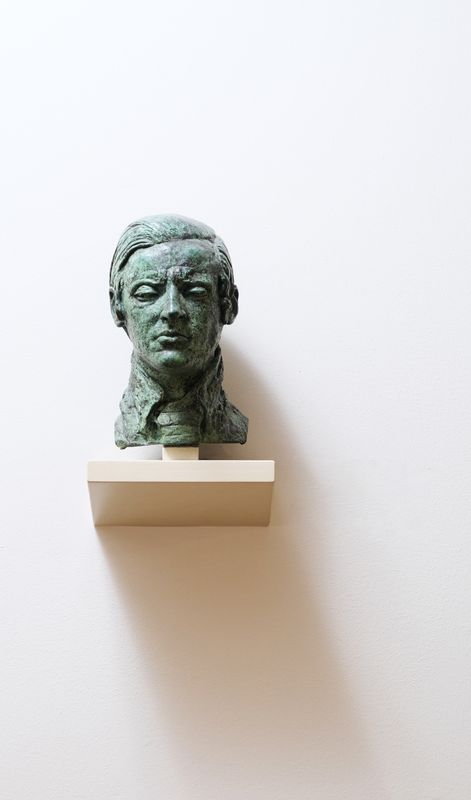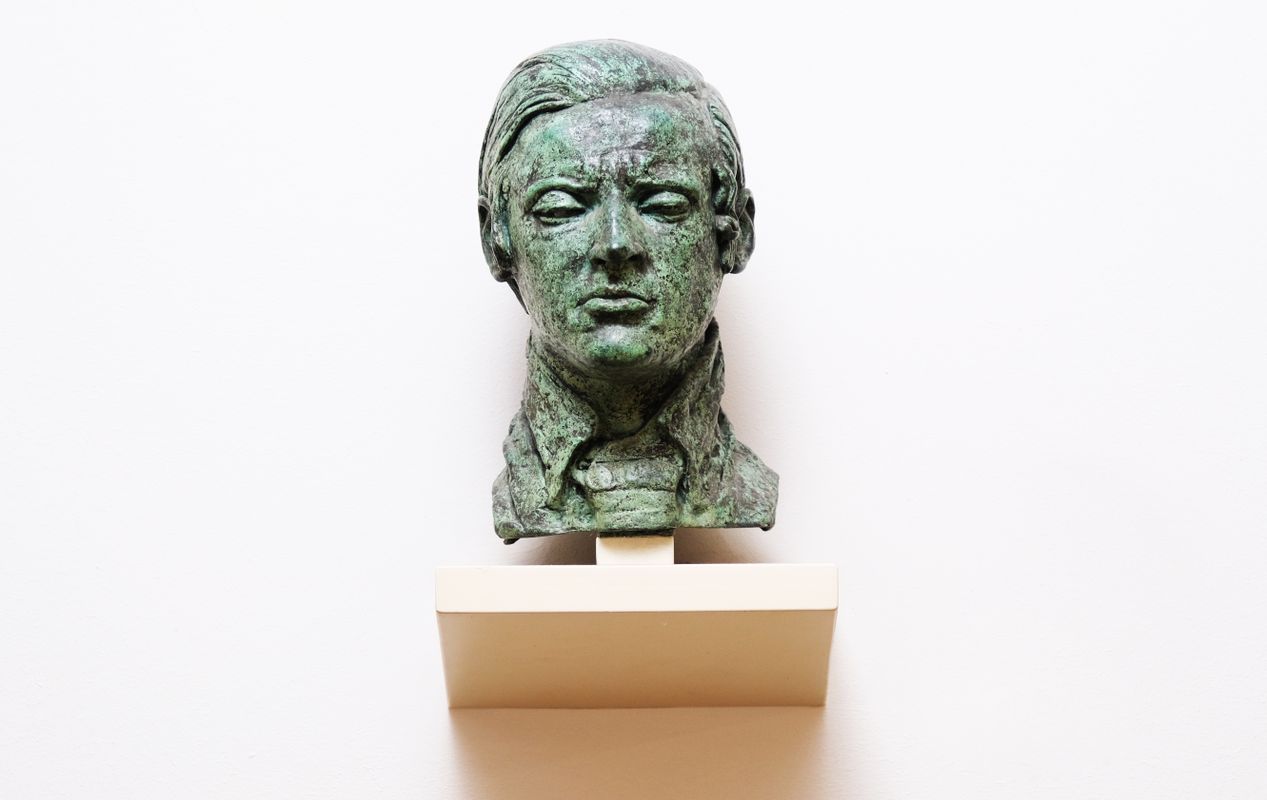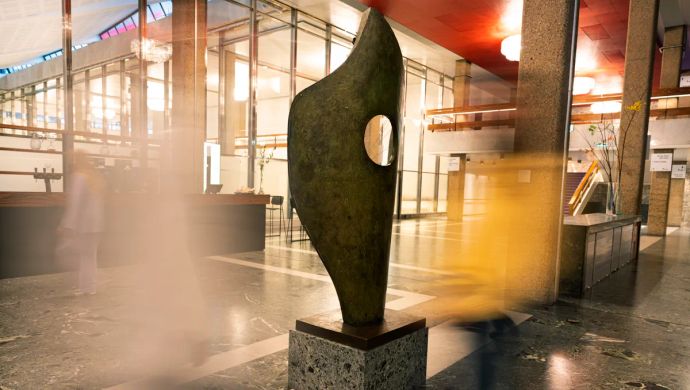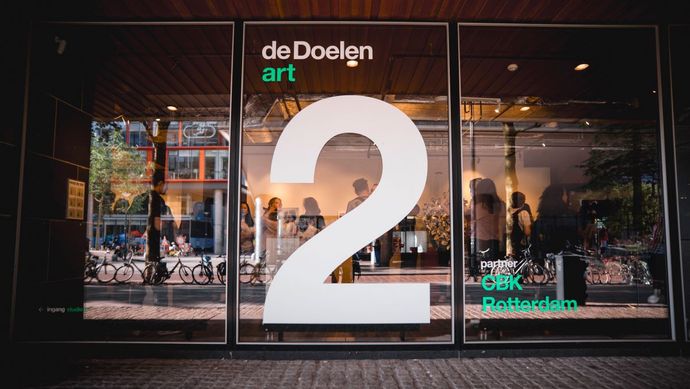Jacob Epstein | Borstbeeld van Bernard van Dieren

Artist: Jacob Epstein (1880-1959)
Artwork: Borstebeeld van Bernard van Dieren (1916)
Collection: Rotterdam City Collection
Acquisition: Erasmus Foundation and Prince Bernhard Fund (1981)
The Jewish-American-British sculptor Jacob Epstein was a pioneer of modern sculpture and a substantial influence on Henry Moore and Barbara Hepworth. His work was often controversial, not shying away from taboos. One of his most famous works is The Risen Christ. The Rotterdam-born composer Bernard van Dieren, a friend of Epstein’s, served as the inspiration and model for this work. In 1916, Epstein created his Head of Bernard van Dieren, a head that he went on to develop into his Christ figure—an anti-militaristic sculpture intended to warn against the horrors of war and violence.
Bernard van Dieren (1887-1936) worked as a music reporter for the Nieuwe Rotterdamsche Courant before he emigrated to England. There, he began to teach himself music and proved to be an excellent composer. His poor health, kidney problems, and severe recurring pains were a factor in his addiction to morphine and cocaine. Numerous artists and writers financially supported the Van Dieren family, including his friend Jacob Epstein, about whom he wrote a book in 1920.
In 1981, Wim Beeren, the director of Museum Boijmans van Beuningen, received a tip that one of the three busts of Bernard van Dieren was being offered for sale. The sculpture was acquired for just under fifteen thousand guilders. The museum believed that the work deserved a spot in de Doelen, given van Dieren’s status as a composer. Wim Beeren and alderman Pim Vermeulen managed to interest the Erasmusstichting (Erasmus Foundation) and the Prins Bernhard Fonds (Prins Bernhard Fund) in contributing to the project. The Erasmusstichting, which also donated Barbara Hepworth's artwork, demanded the sculpture remain visible to the Doelen audience at all times. If this were no longer to be the case, the sculpture would have to be relocated to Museum Boijmans Van Beuningen.




